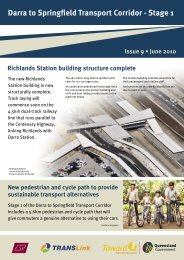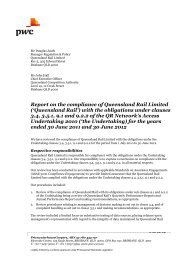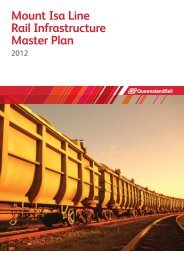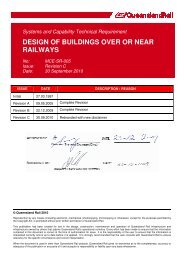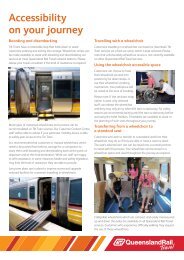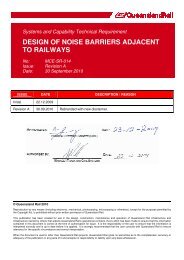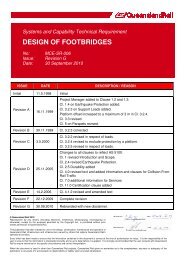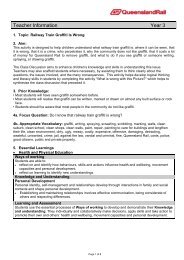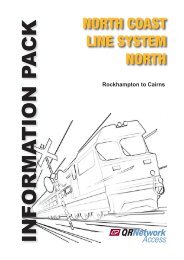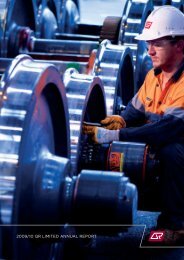code of practice â railway noise management - Queensland Rail
code of practice â railway noise management - Queensland Rail
code of practice â railway noise management - Queensland Rail
You also want an ePaper? Increase the reach of your titles
YUMPU automatically turns print PDFs into web optimized ePapers that Google loves.
QR Code <strong>of</strong> Practice for <strong>Rail</strong>way Noise Management<br />
do the best it reasonably can to control any Unreasonable Noise<br />
from its activities.<br />
4.2 QR and the Environmental Protection (Noise) Policy 1997<br />
(“EPP Noise”) – Planning Levels<br />
The balancing <strong>of</strong> the community’s need for efficient transport<br />
systems with the need to manage the impacts <strong>of</strong> that system is<br />
given formal recognition in the EPP Noise in which a <strong>railway</strong> is<br />
described as a Beneficial Asset.<br />
The EPP Noise recognises that:<br />
“Although the operation or use <strong>of</strong> Beneficial Assets may<br />
have significantly adverse effects on the Environmental<br />
Values, they are necessary for the community’s<br />
environmental, social and economic wellbeing.<br />
However, it is intended that, so far as practicable, any<br />
significantly adverse effects from their use or operation<br />
be progressively reduced.”<br />
Generally, the EPP Noise provides guidance on the reduction <strong>of</strong><br />
Unreasonable Noise<br />
The EPP Noise nominates “Planning Levels” for a Beneficial<br />
Asset such as a <strong>railway</strong> which may be used as a guide in deciding<br />
a reasonable <strong>noise</strong> level for its use or operation. The EPP Noise<br />
recognises however that those levels may not be appropriate for<br />
an older <strong>railway</strong>. It envisages that it may be reasonable to apply<br />
the levels only in the long-term to allow time to progressively<br />
reduce any significantly adverse effects on the Environmental<br />
Values from its activities. The Planning Levels are as follows:<br />
• 65dB(A), assessed as the 24 hour average equivalent<br />
continuous A-weighted sound pressure level<br />
• 87dB(A) assessed as a Single Event Maximum Sound<br />
Pressure Level.<br />
These levels are to be assessed 1 metre in front <strong>of</strong> the most<br />
exposed part <strong>of</strong> an affected Noise Sensitive Place.<br />
Page 2



